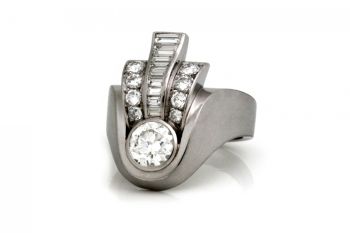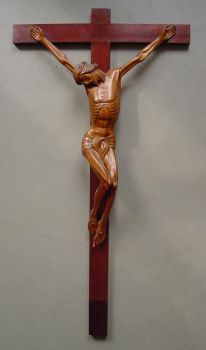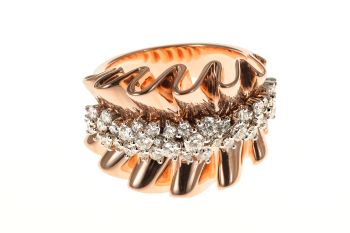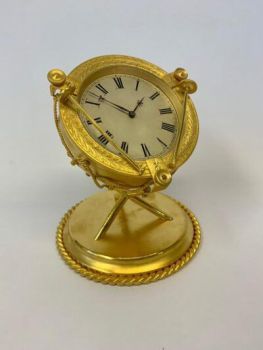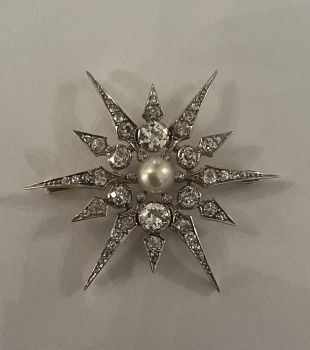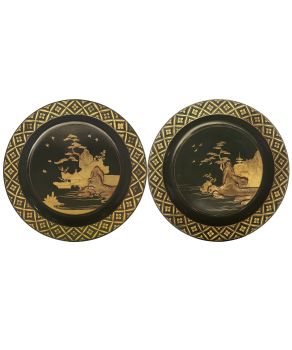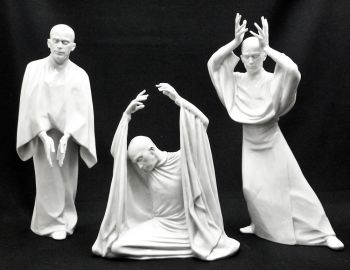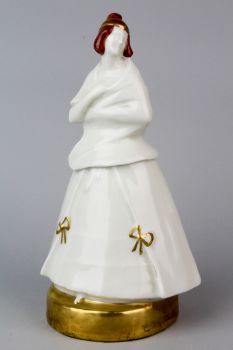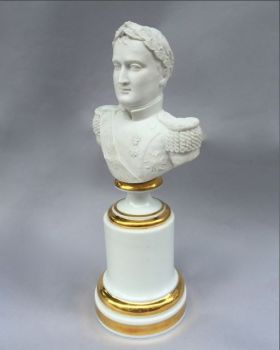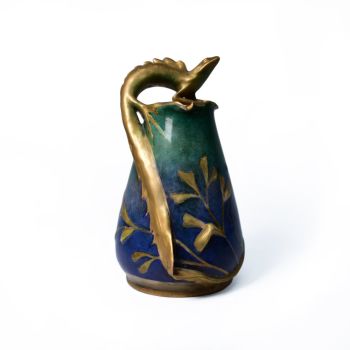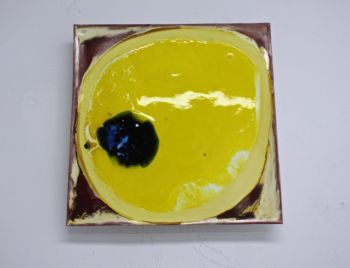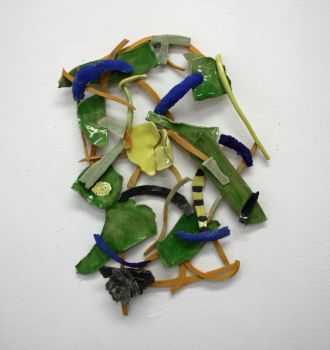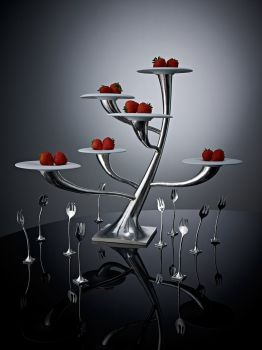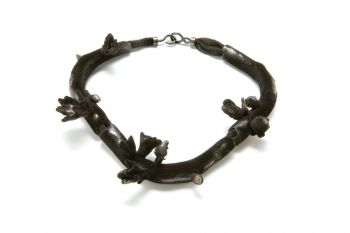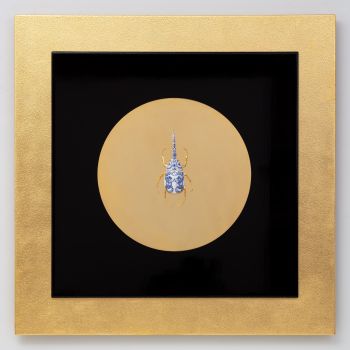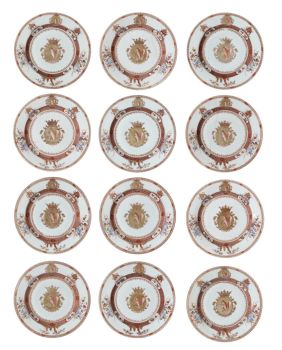A large Japanese porcelain blue and white bowl, Arita, Edo period, c. 1660-1680 1660 - 1680
Artista Sconosciuto
Porcellana giapponesePorcellana
12.80 cm, ø 32 cm
ConditionVery good
Prezzo su richiesta
Menken Works of Art
- A proposito di opere d'arteA large blue and white bowl with floral decoration.
Japan, Arita, Edo period, c. 1660-1680.
The large bowl with a bulbous body, spreading sides and everted rim, almost of klapmuts shape, decorated in underglaze blue with large flowering chrysanthemums (菊 kiku) with leaves, the rim with a band of foliate (唐草 karakusa) scrolls, the inside decorated with a pot from which chrysanthemum flowers emerge, set against the background of a fenced garden courtyard. The outer rim has a deep cobalt border (almost of a black tone), fluxing inwards. The bowl is supported on a high footring, the base with a circle in underglaze blue, around the outside of the foot with a triple blue line.
Although some types of chrysanthemum begin flowering in the summer, the chrysanthemum is primarily an indication of autumn. Like many autumn motifs, the chrysanthemum evokes feelings of melancholy in Japan.
The flowerpot (花盆 kabon) motif was used on the first Japanese export porcelain in the mid-17th century and comes from Chinese Kraak porcelain.
Ref:
A blue and white shaving bowl with an exact similar decoration of a flowerpot with chrysanthemum and of the same style, dated by the author to the Kanbun period (1661-1673) is in the Groninger Museum collection and published in: A Survey of Japanese Ceramics (Maria Penkala, 1980), p. 188.
A large blue and white bowl of the same shape is in the collection of August the Strong, Dresden, SKD Museum, registration no. PO 954
For other large blue and white bowls of the same shape, see: Porcelain for Palaces (John Ayers, Oliver Impey and J.V.G. Mallet, 1990), p. 100, pl. 44 and p. 109, pl. 59
For an explanation on the chrysanthemum symbolism and the origin of the flowerpot on Japanese ceramics, see: Kakiemon Porcelain (Menno Fitski, 2011), p. 149.
Dimensions:
Diameter 32 cm, height 12.8 cm.
Condition:
Very good condition, without damages.
Inv. No: MW99 - A proposito di opere artista
Può succedere che un artista o un creatore sia sconosciuto.
Alcune opere non sono determinate da chi sono state realizzate o sono state realizzate da (un gruppo di) artigiani. Esempi sono statue dell'antichità, mobili, specchi o firme non chiare o leggibili ma anche alcune opere non sono affatto firmate.
Inoltre puoi trovare la seguente descrizione:
•"Attribuito a …." A loro avviso probabilmente opera dell'artista, almeno in parte
•“Studio di ….” o “Officina di” A loro avviso un'opera eseguita nello studio o nella bottega dell'artista, eventualmente sotto la sua supervisione
•“Cerchio di…” A loro avviso un'opera del periodo dell'artista che mostra la sua influenza, strettamente legata all'artista ma non necessariamente al suo allievo
•"Stile di..." o "Seguace di..." A loro avviso un'opera eseguita nello stile dell'artista ma non necessariamente da un allievo; può essere contemporaneo o quasi contemporaneo
•“Modalità di…” A loro avviso un'opera nello stile dell'artista ma di epoca successiva
•"Dopo …." A loro avviso una copia (di qualsiasi data) di un'opera dell'artista
•“Firmato…”, “Datato…” o “Iscritto” A loro avviso l'opera è stata firmata/datata/inscritta dall'artista. L'aggiunta di un punto interrogativo indica un elemento di dubbio
•"Con firma....", "Con data...", "Con iscrizione..." o “Riporta firma/data/iscrizione” a loro avviso la firma/data/iscrizione è stata aggiunta da qualcuno diverso dall'artista
Sei interessato ad acquistare questa opera d'arte?
Artwork details
Related artworks
Artista Sconosciuto
Anello Fantasia in Oro Rosso con Diamanti2017
Prezzo su richiestaLyppens Juweliers
Artista Sconosciuto
Engels struttclock gesigneerd H.Rodrigues 42 Piccadilly 19th century
Prezzo su richiestaNico van den Assem restauratie
1 - 4 / 12Artista Sconosciuto
UN NETSUKE IN AVORIO DI UN OLANDESE CHE TIENE UN GALLETTO18th century
Prezzo su richiestaZebregs & Röell - Fine Art - Antiques
Artista Sconosciuto
UN PICCOLO NETSUKE IN AVORIO DI UN OLANDESE CON UN TAMBURO1750 - 1800
Prezzo su richiestaZebregs & Röell - Fine Art - Antiques
Artista Sconosciuto
UN RARO GRANDE TELESCOPIO GIAPPONESE IN PELLE LACCATA1750 - 1800
Prezzo su richiestaZebregs & Röell - Fine Art - Antiques
Artista Sconosciuto
COPPETTA CROGIOLO PICCOLA SAWASA GIAPPONESE 'FORMA PESCA'early 18th
Prezzo su richiestaZebregs & Röell - Fine Art - Antiques
Artista Sconosciuto
UN NETSUKE MARINO IN AVORIO DI UN OLANDESE CHE TIENE UN FAN . CINESE18th century
Prezzo su richiestaZebregs & Röell - Fine Art - Antiques
Artista Sconosciuto
UN NETSUKE IN AVORIO DI UN OLANDESE CHE GIOCA CON UN RAGAZZINO18th century
Prezzo su richiestaZebregs & Röell - Fine Art - Antiques
Artista Sconosciuto
A rare Japanese export lacquer medical instrument box1650 - 1700
Prezzo su richiestaZebregs & Röell - Fine Art - Antiques
Artista Sconosciuto
The Stamford Raffles Secretaires.1800 - 1813
Prezzo su richiestaZebregs & Röell - Fine Art - Antiques
1 - 4 / 22Artista Sconosciuto
A Chinese porcelain blue and white 'Mantou Xin' bowl, Kangxi period (1661-1722)1700 - 1720
Prezzo su richiestaMenken Works of Art
Artista Sconosciuto
A blue and white Romance of the Three Kingdoms charger, Kangxi period (1661-1722)1661 - 1722
Prezzo su richiestaMenken Works of Art
Artista Sconosciuto
Gobelet vénitien ailé1650 - 1700
Prezzo su richiestaPeter Korf de Gidts - Antiquairs
1 - 4 / 24Samuel Dejong
Anatomia Blue Heritage, Atlas Closed2017 - 2019
Prezzo su richiestaVilla del Arte Galleries
1 - 4 / 24Artista Sconosciuto
A white jade ‘Lotus Seedpod and Bug’ carving, Qing dynasty, 18th century18th century
Prezzo su richiestaMenken Works of Art
Artista Sconosciuto
Chinese carnelian agate vase or brush washer, 18th/19th century, Qing dynasty1720 - 1820
Prezzo su richiestaMenken Works of Art
Artista Sconosciuto
A Chinese porcelain blue and white 'Mantou Xin' bowl, Kangxi period (1661-1722)1700 - 1720
Prezzo su richiestaMenken Works of Art
Artista Sconosciuto
Chinese gilt bronze censer, Xuande mark, 18th century, Qing dynasty18th century
Prezzo su richiestaMenken Works of Art
Artista Sconosciuto
A blue and white Romance of the Three Kingdoms charger, Kangxi period (1661-1722)1661 - 1722
Prezzo su richiestaMenken Works of Art
Artista Sconosciuto
Two large Chinese carved wooden architectural wall panels, Qing dynasty, 19th century19th century
Prezzo su richiestaMenken Works of Art
1 - 4 / 10










